Getting Started with AI Video Creation
Creating videos with AI has never been more accessible. Whether you're a marketing professional, content creator, educator, or just someone curious about the technology, this comprehensive guide will walk you through the entire process of creating stunning AI-generated videos from scratch.
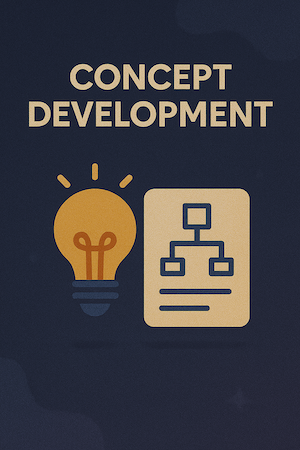
Step 1: Planning Your AI Video
Before diving into any AI tool, it's essential to have a clear vision of what you want to create. This phase sets the foundation for your entire project.
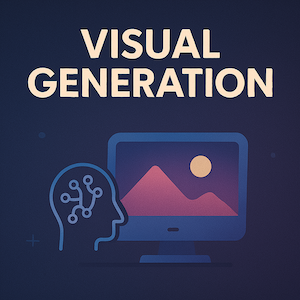
Step 2: Choosing the Right AI Tool
Different AI video generators excel at different types of content. We'll help you select the perfect tool for your specific project requirements.
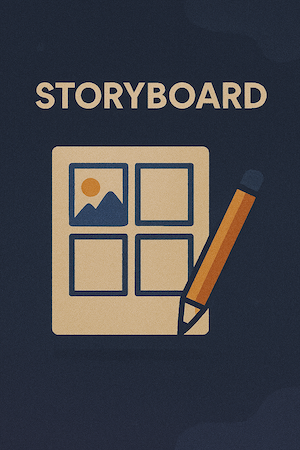
Step 3: Crafting Powerful Prompts
Learn the art of prompt engineering to get precisely the visuals you're imagining from AI video generators.
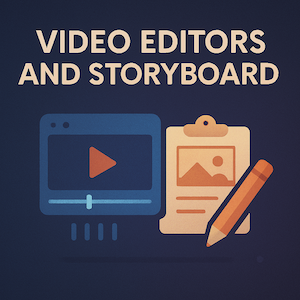
Step 4: Post-Processing
Discover how to refine and enhance your AI-generated videos to achieve professional-quality results.
Step 1: Planning Your AI Video Project
Even with the most advanced AI video tools, proper planning remains essential for creating compelling content. Follow these key planning steps before generating your first frame:
Define Your Video's Purpose
Start by answering these fundamental questions:
- Who is your target audience? Understanding your viewers' preferences will guide your creative decisions.
- What action do you want viewers to take? Whether it's making a purchase, subscribing, or simply being entertained, your goal should influence your video's style and content.
- What message are you trying to convey? Clarity of message leads to more effective prompts for the AI.
Determine Your Video Style
AI video generators can produce various visual styles. Consider which best suits your project:
- Photorealistic: Lifelike visuals ideal for product demonstrations or scenarios requiring realism.
- Animation/Stylized: Perfect for abstract concepts, brand-focused content, or creative storytelling.
- Mixed-media: Combining elements of both for unique visual experiences.
Create a Simple Storyboard
Even a basic visual outline helps tremendously:
- Break your video into key scenes or moments
- Sketch or describe each scene's main elements
- Note the emotional tone and visual style for each segment
- Consider transitions between scenes
Step 2: Selecting the Right AI Video Generation Tool
With numerous AI video generators available, choosing the right one for your specific project is crucial. Here's how to make an informed decision:
Popular AI Video Generation Tools in 2025
Compeller AI

Best for: Music videos, audio-synchronized content, live performances
Compeller AI specializes in creating videos that sync perfectly with audio. Its storyboard interface allows precise control over how visuals align with music elements.
Runway
Best for: Professional video production, cinematic sequences, complex animations
Runway offers powerful video generation capabilities with extensive editing tools for professional-quality output.
Pika Labs
Best for: Quick social media content, simple animations, rapid experimentation
Pika Labs offers a straightforward approach to video generation, making it perfect for beginners and quick content creation.
How to Choose Based on Your Project Needs
Consider these factors when selecting an AI video tool:
- Project Type: For music videos or audio-driven content, choose Compeller AI. For professional cinematic sequences, Runway is better suited.
- Technical Comfort: Beginners might prefer Pika Labs or Compeller AI for their more intuitive interfaces.
- Budget Constraints: All tools offer free tiers, but with varying limitations. Consider what features are essential for your project.
- Video Length: Some tools excel at short clips (Pika), while others support longer content (Compeller, Runway).
- Control vs. Simplicity: More control typically means a steeper learning curve. Decide whether you need fine-grained control or prefer simplicity.
Step 3: Mastering the Art of AI Video Prompts
The quality of your prompts directly determines the quality of your AI-generated videos. Effective prompt writing is perhaps the most valuable skill in AI video creation.
Prompt Structure for Video Generation
Unlike image generation prompts, video prompts need to consider motion, continuity, and temporal elements. Here's a proven structure for effective video prompts:
Basic Video Prompt Template
[Scene description] + [Subject] + [Action] + [Style] + [Atmosphere] + [Camera movement] Example: "A futuristic cityscape with flying cars and neon lights, a young woman walking confidently, cyberpunk style with blue and purple color grading, atmospheric fog, slow motion drone shot following from behind"
Key Elements for Effective Video Prompts
Be Specific About Motion
Clearly describe movement: "camera slowly panning right to left" or "character walking briskly toward camera"
Include Visual Style
Specify aesthetic: "photorealistic," "anime style," "cinematic with shallow depth of field"
Consider Composition
Describe framing: "wide angle establishing shot," "close-up on character's face," "overhead view"
Focus on Details
Include specific visual elements: "golden hour lighting," "shallow depth of field," "soft shadows"
Advanced Prompt Techniques
Sequence Prompting for Scene Transitions
For tools like Compeller AI that support storyboarding, you can create prompts for different segments of your video to ensure smooth transitions:
Scene 1 (0:00-0:15): "Close-up of a vintage record player, needle dropping onto vinyl, warm sepia tones, shallow depth of field" Scene 2 (0:15-0:30): "Transition to abstract visualization of sound waves emanating from the record, vibrant colors against black background, smooth flowing movement" Scene 3 (0:30-0:45): "Camera pulls back to reveal a retro-styled room with the record player, warm afternoon light streaming through windows, dust particles visible in light beams"
Common Prompt Mistakes to Avoid
- Being Too Vague: "A cool video with awesome effects" won't yield good results. Be specific about visuals and movement.
- Overloading With Details: Too many conflicting elements can confuse the AI. Focus on the most important aspects.
- Ignoring Continuity: For longer videos, ensure your prompts maintain visual consistency between scenes.
- Neglecting Motion Description: Always specify how elements should move within the frame.
- Using Technical Terms the AI Doesn't Understand: Stick to common visual descriptors rather than highly specialized terminology.
Step 4: Editing and Enhancing Your AI Videos
Raw AI-generated videos often benefit from additional refinement. This final step can transform good content into great content.
Essential Post-Processing Steps
Trimming and Combining
Remove less successful segments and stitch together the best parts of multiple generations.
Audio Integration
Add background music, voice narration, or sound effects to enhance your visual content.
Color Correction
Adjust brightness, contrast, and color balance for a more professional look.
Text Overlays
Add titles, captions, or calls to action to enhance your message.
Recommended Editing Tools
Depending on your technical comfort level, consider these options:
- Beginner-Friendly: CapCut, InVideo, or VEED.IO offer simple interfaces for basic edits
- Intermediate: Adobe Premiere Rush or Final Cut Pro provide more control while remaining accessible
- Advanced: Adobe Premiere Pro or DaVinci Resolve offer professional-grade capabilities
Overcoming Common AI Video Limitations
Problem: Inconsistent Character Appearance
Solution: Generate multiple versions of the same scene and select the most consistent segments, or use image-to-video generation with a reference image to maintain consistency.
Problem: Unnatural or Jerky Motion
Solution: Apply subtle motion smoothing effects in your editing software, or regenerate with prompts that specifically request "smooth camera movement" or "fluid motion."
Problem: Low Resolution or Visual Artifacts
Solution: Many editing tools offer upscaling features. Alternatively, services like Topaz Video Enhance AI can improve resolution. For artifacts, subtle blurring effects or careful cropping can help.
AI Video Creation Examples
To inspire your own projects, here are three examples of effective AI videos created with different approaches:
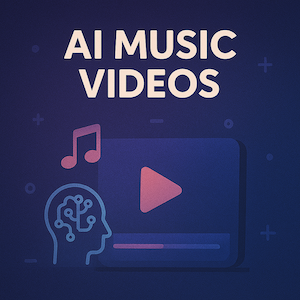
Music Video Example
Tool Used: Compeller AI
Key Technique: Using the storyboard editor to precisely match visual changes to audio beats and transitions.
Result: A professional-looking music video with visuals that perfectly complement the audio track's mood and rhythm.
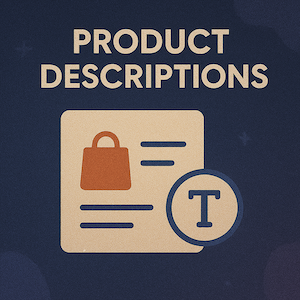
Product Showcase
Tool Used: Runway
Key Technique: Starting with product photography and using image-to-video to create realistic animations.
Result: An engaging product showcase with professional-looking transitions and dynamic camera movement.

Social Media Content
Tool Used: Pika Labs
Key Technique: Creating short, eye-catching clips with text overlays added in post-processing.
Result: Attention-grabbing 15-second videos optimized for social media engagement.
Frequently Asked Questions About AI Video Creation
How long does it take to create an AI video?
The time required varies based on several factors:
- Generation Time: Most AI tools generate videos in 1-5 minutes for short clips (5-10 seconds). Longer videos may require multiple generations and stitching.
- Planning: 30 minutes to several hours depending on complexity
- Prompt Refinement: Often requires 3-5 iterations to get optimal results
- Post-Processing: 30 minutes to several hours depending on the level of editing needed
For a complete 30-second AI video with proper planning, generation, and basic editing, budget 2-4 hours for your first projects. With experience, this can be reduced significantly.
Can I create AI videos for commercial use?
Yes, but with important considerations:
- Most AI video platforms allow commercial usage on their paid plans, but free tiers often restrict commercial use.
- Each platform has different terms of service regarding commercial rights:
- Compeller AI: Allows commercial use on Pro and Enterprise plans
- Runway: Permits commercial use on paid plans
- Pika Labs: Allows commercial use with attribution requirements
- Always check current terms of service before using AI-generated content commercially
- Be aware of content that might infringe on existing copyrights or trademarks
For business applications, consider Enterprise plans that offer more extensive rights and dedicated support.
How can I improve video quality and consistency?
Several techniques can help enhance quality and maintain consistency:
- Use image-to-video generation - Start with a high-quality reference image to maintain visual consistency
- Generate multiple versions - Create several variations of each segment and choose the best ones
- Maintain style consistency in prompts - Use the same style descriptors across all prompts
- Generate at highest quality settings - Use the highest resolution and quality settings available, even if it takes longer
- Consider video upscaling tools - Software like Topaz Video Enhance AI can improve resolution
The most important factor is consistent prompting. Create a "prompt library" of style elements that you use consistently throughout your project.
What are the current limitations of AI video generation?
While AI video technology is advancing rapidly, some limitations remain in 2025:
- Length: Most tools excel at 5-30 second clips; longer videos require stitching multiple segments
- Character Consistency: Maintaining the same character appearance throughout a video remains challenging
- Text Rendering: Many AI tools struggle with accurate text rendering in videos
- Complex Narratives: Multi-scene storytelling with clear plotlines is still developing
- Specific Brand Elements: Accurately rendering specific logos or product designs remains difficult
The technology is evolving rapidly, with new capabilities being added monthly. What's challenging today may be simple in the near future.
Do I need technical skills to create AI videos?
No, you don't need technical expertise to create basic AI videos. Modern AI video platforms are designed with user-friendly interfaces. However:
- Basic understanding of visual composition helps craft better prompts
- Familiarity with descriptive language improves results
- Patience for experimentation is essential as perfect results rarely come on the first try
For more advanced results, basic video editing skills are beneficial but not required. Many platforms now include simple editing tools within their interfaces.
The most important skill is clear communication through prompts, which improves with practice regardless of your technical background.
Ready to Create Your First AI Video?
Now that you understand the complete process, it's time to start creating. Remember that AI video generation is still an emerging technology – experimentation and iteration are key to success.